Review of GSM- handsets Nokia 6085 and Nokia 6086
Live photos of Nokia 6085 è 6086
Sales package:
- Handset
- 850 mAh Li-Ion battery (BL-5B)
- User Guide
- Charger
- Wired mono-headset HS-5 (Pop-port)
Nokia 6085 and Nokia 6086 continue the range of fold phones for middle-to-budget market. For convenience, we may place these two between Nokia 6103 and the 6125, without deeming them the successors to Nokia 6060 (as the index suggests), as they stand too far apart in terms of functionality.
At the same time the distinctions between the two devices reviewed today are minimal, specifically these are different sort of plastic applied to some parts and Wi-Fi connectivity in Nokia 6086. And that’s pretty much all about the enhancements of the senior device, apart from a variety of color solutions. This is the main reason (another one is the feedback on the forum) which encourages us to keep on our experiments with making up comparative reviews.
In this review we will center on Nokia 6086, going into description of the two devices at once where it is possible. Corresponding marks and notes within the text of this article will point out all the differences.


Design and controls
The model maintains classical fold phone’s design, being a handset measuring 92x46x23 mm and weighting 84 g. Being portable in size, this clamshell readily slips into just about any pocket or purse, at that your breast pocket will not be weighed down either. Dimensions and weight parameters are identical for both models.
The 6085 comes in three trims. The silver-finished variant has light-colored fascia, display rim and the keypad, whereas the spines and other parts are made in black. The pink and gold editions show off silver keypad with the coating of the shell matching the color scheme’s name.

As for the 6086, for the time being it comes in two colors – entirely black casing (including its interior) and pink-pale, with the latter color scheme boasting all-back internal elements. In the near future more trims might be coming out; specifically the black scheme for Nokia 6085, which would be a consistent step, especially for the Russian market.
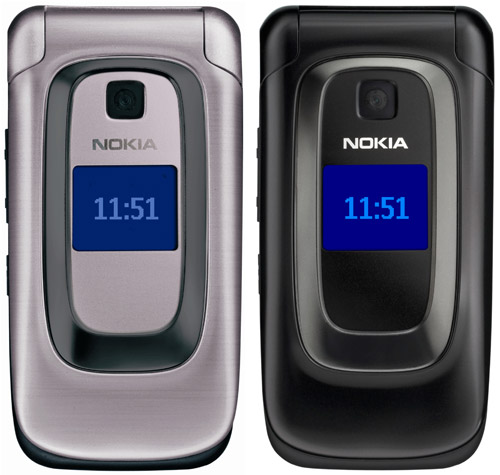
As a matter of fact the folder design here reminds of the Nokia 6290, even though it might be challenging for many to pick out this point, since they belong to different types in the first pace. However for curiosity sake you can go on and face off the two and look at what’s similar and what’s not.
With the clam closed, the place where the halves fuse makes the phones look-alikes. The design of edges, exposed on the faceplate, is practically the same for both devices. Camera location and the external display rim add some similarity as well.
The same goes for the keypads, however this seems to be an unintentional step, just physically similar-looking fold-out mechanism.
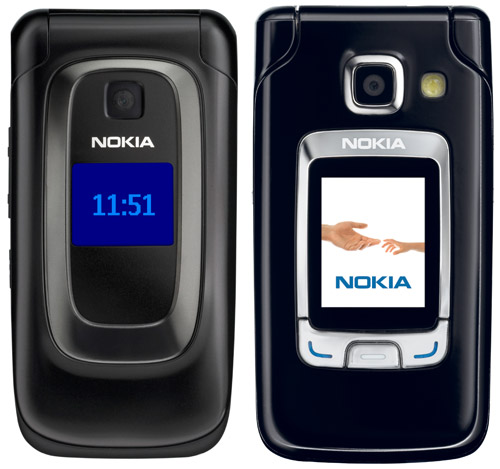
The approach to materials used in these offerings is also interesting, at that Nokia 6086 got a dash better treatment in this respect. But first things first.
The front panel, as well as the rear, is made of conventional-looking plastic with a sole difference, though – its exterior is finished in two coating types. On the upper end and a part of the back side, the glossy finishing makes the surface glitter in the sun, while the rest of the details are patterned with horizontal stripes lending them a feel of polished timber, but in a different color. The 6086 houses one more highlight worth mentioning – almost all parts of the casing, specifically spines, keypad and the interior itself, are made of soft touch plastic which (thanks to Motorola) is now becoming one of the hottest trends in cell phones. Its usage is undoubtedly the right thing, as holding a handset coated in soft plastic leaves far more pleasant feelings, making you wish to get a grip on it again and again.

Naturally, these traits are quite difficult to spot in real life, and I can hardly imagine anyone focused on how his handset shines in sunlight. But I should confess when I first got my hands on the device these highlights actually did catch my eyes. Another newsworthy fact is that Nokia employs not-so widely spread trick for mid and budget segments, specifically, not only does it put the feature pack and slimness of the offering into the limelight, characteristic and catchy material also gets its share of hype.

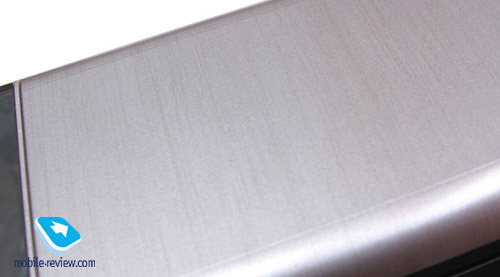
Made of standard plastic, which is a classic material, used nearly in every modern phone, the sideplates and the inside part of the 6085 are of no interest.
The face plate houses external monochrome display rimmed with metal-like plastic and the camera lens. On the rear is a small stripe matching the display’s edging color, where the loudspeaker and the logo are inserted. The rest of lower half beneath this stripe is occupied by the battery cover. To detach it you should just move it down, as it employs ordinary slot fastening, making for no wobbly feel or gap, unless you start pulling it down on purpose. Under the cover sits the battery, which we are going to talk about a bit later. Having detached this detail you’ll see the SIM-card bed which is quite typical for some Nokia-branded models – a folding cover and a slot for the card inside.


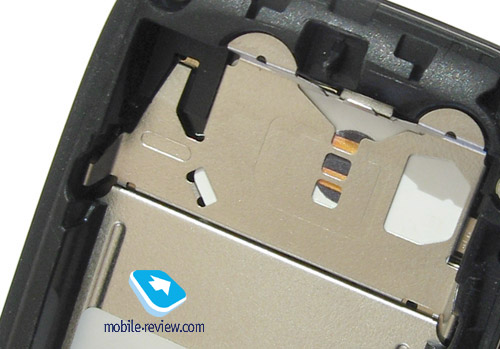
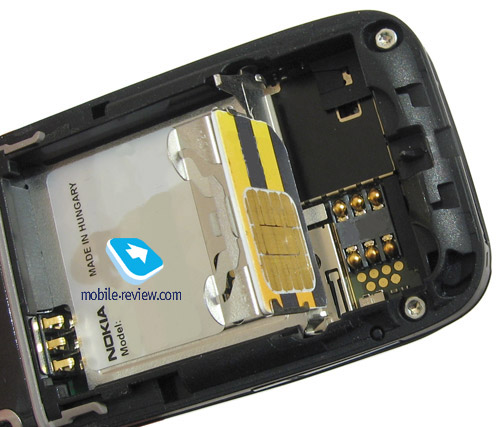
The volume rocker key and the dedicated camera key are located on the left-hand side.
On the right you see the microSD bay (former TransFlash). The device supports memory expansion card up to 4 Gb big and allows hot swapping them. The slot is covered by a plastic flap, which doesn’t require you to hold it when changing the card and is next to impossible to lose.


The upper end is free of any widgets, as for the bottom, slim charging port and typical for Nokia Pop-port are mounted there as well as the holes for a carrying strap, but to put it through you will need to take off the battery cover first. At the foot, next to the SIM-card slot, is the ridge for attaching a hand or neck strap.

Flipping the handset open, your eyes get focused on the keypad which takes almost the entire real estate of the bottom half of the folder. About a third of keypad is occupied by the navigation block, the rest – by numeric keys. Size of each particular key and pads bulging out of them make for overall comfort feel. Texting with a keypad like this is a breeze - you really do not notice how you press the keys, which indicates quality of the keypad. The keys are big enough to prevent you from pushing wrong buttons, especially if you already have some experience of handing Nokia-branded devices.
The navigation block used in Nokia 6085 and the 6086 is quite common among the models by this maker. It comprises a four-way navigation key with OK in the centre, flanked by four buttons (two soft-keys and pick/hang up keys). These navigation controls are a cinch to use, mostly owing to the navi-pad being very convenient.
The volume rocker switch mounted on the right spine is right under your forefinger during a call, but a tad too springy feel makes for somewhat difficult usage while having a phone conversation.



All keys are lit in not particularly bright white, yet it proves to be just right for most environments. It perfectly fits the black keypad of the 6086. The backlighting is evenly spread over all buttons, the etching is legible both on the keys in the centre and those at the rim. The only letdown of the 6085 concerning the backlighting is the silver color of keys which makes it difficult to read captions in day light - white backlighting just blends with the similarly-toned keys. But in poor light it was never an issue.

The casing is well-built in either of the handsets. There are no squeaks; all details are precisely attuned to each other. Over and above only a couple of details, such as the external and internal displays are smudge-prone. The stripe with the loudspeaker and the logo is exposed to wear and tear, though all these scratches can be seen only at a certain angle, thus you may easily turn a blind eye to that issue. Sporting hard-to-soil casing, the handset does stand out against the backdrop of other proposals, which require you to drag a duster along so as to keep their looks in top state (Motorola KRZR K1 and SE Z610 share the first place in “soil-me-fast” contest).



Battery life
The lifetime figures put up by the 850 mAh battery are really something. In conditions of Moscow networks the battery kept the handset up and running for 5 days at 20-30 minutes of calls a day. Should listen to the radio or music player up to two hours a day and browse web-pages for about an hour, the battery life falls down to 3 days, which is still quite good.

Display
External display
On the mono display, you’ll see light-blue symbols on the dark-violet background, with the 96x68 pixels (20x16 mm) resolution it is able to show up to four service lines.
The top live plays host to signal strength, battery charge, Bluetooth and Wi-Fi (for Nokia 6086) status indicators, new message icon and silent mode notification.
Second line from the top displays your carrier name and name or number of caller on an incoming call. If you have missed a call this information would also be displayed in the second line in stead of the carrier.
In the third line, the only line in stand by mode (which also get slightly magnified) you may see current time. Choosing between analog or digital watch is up to you. It is pretty much impossible to see the time on inactive display - to do that you should bring it right to your eyes. And when you wake it up from the sleep mode by pressing one of the side-mounted keys, the time bar becomes too small which doesn’t allow for reading information in a convenient way either. So in most cases you will end up starring at the screen.
The bottom line features information oncurrent profile and date.
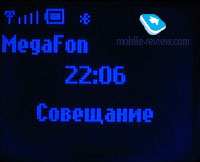 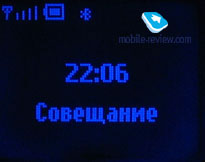
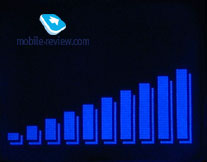 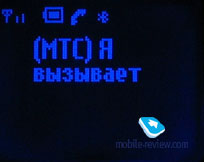
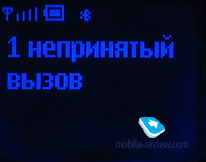 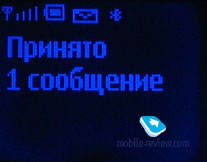

Internal display
Folding the phone open unveils the internal display which utilizes a cSTN-matrix with 128x160 pixels (1.8”, 28x35 mm) resolution showing, as manufacturer claims, up to 262 K colors. Facing it off against that of Nokia 6070, we found no differences, color rendering and brightness proved to be on the same level. Quoted 262 K colors are here more for the appearance’s sake and throwing dust in consumers’ eyes. At least we have not noticed any differences from the screen capable of 65 K colors. The display here fades in the sun, but the brightness remains sufficient to read information without any serious problems. At that neither brightness nor gamma can be adjusted in the handset.
All in all the display is fine, yet we have one question to ask – while both devices are pretty feature-packed, and Nokia 6086’s Wi-Fi connectivity lifts it one step up, they retain budget displays running on cSTN-matrix.
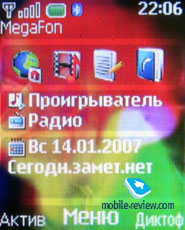
Menu
In this part of our review we will say nothing about such standard functions as phonebook and organizer, for all of them are typical for S40 platform 3rd edition and pretty well covered in a dedicated article here.
Both models are built on the 3rd edition extended with Feature Pack 1. So all refinements brought about by that version of the platform are characteristic for the handsets, we can easily draw parallels with Nokia 5200. Thus here is the list of Feature Pack 1 updates for S40 3rd edition we have found out:
- Totally revamped music player, modified interface, support for music library and files sorting.
- Flash Lite 2 support against version 1.1 in previous devices.
- Use of flash-clips as wallpaper or screensaver.
- OMA DRM 2.0 against version 1.0 in previous models.
- A2DP-profile for Bluetooth allowing wireless headsets.
- Ability to assign any file as Call back tune (carrier’s support is required).
- Security and Trust Services API (JSR-177) releases for Java.
- Music applications (player, radio) work in background mode anytime, except when camera app is called up.
In both devices 4Mb of built-in memory is available. Such small amount of storage memory is seemingly caused by the ability to expand it using memory cards. Anyhow, it would be difficult to do without a memory card in these handsets, as with the bundled memory alone you would barely upload a pair of sound clips. The phones don’t come boxed with memory cards, though.
Pre-installed applications, games
Four preinstalled games are at your disposal.
Galaxy Ball is modified tetris where you should put the figures together basing on their color.
 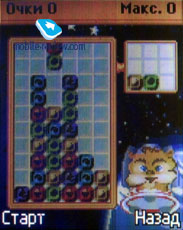
Golf Tour (Golf with third person view) – it takes some time to master it but the game is really exciting.
 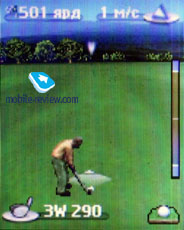
High Roller - a collection of different poker variations.
 
Sudoku is a quite specific logical game.
 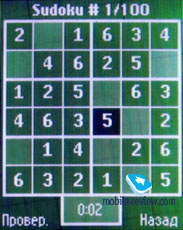
Applications
Of the five preinstalled applications some are really useful.
Converter II is a quite self-explanatory application, used for converting temperature, currency, weight, length, square and volume. Of course, one will hardly use it more frequently than once in a while, but in some cases the app may be indispensable.
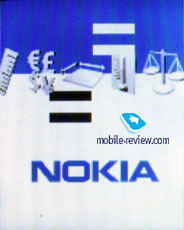 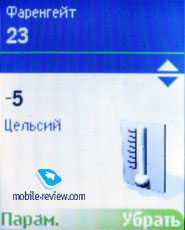
World time lets you know the time in four different areas in the world. World map and the ability to choose a city are also at your disposal. Russia is represented only by Moscow.
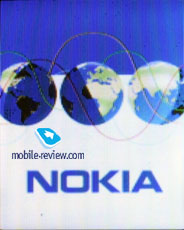 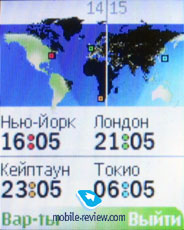
Expense Manager – an application with whose help you are able to work out and keep track of your budget. Several categories are available: food, transport, entertainments, clothes, electronics, accessories, public utilities, family, health, accounts. It is impossible to change or add new categories. Expenses on each category are saved in the currency you picked. After adding all entries you are at liberty to view total expenses by day, month or category. Much similar to expenses, you set up the budget.
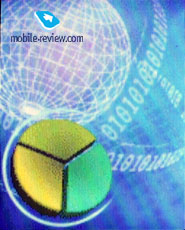 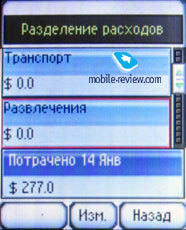
Translator is used to translate words. Among supported languages are English, French, German, Spanish and Italian, though Russian is not supported. The app is utterly simple: after submitting the word you need and you get its translation in other languages, and that’s about it.
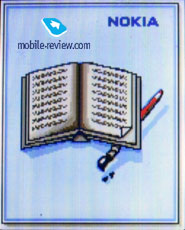 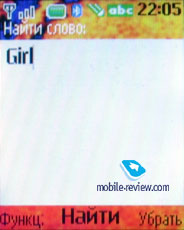
Nokia Sensor serves for exchanging data through Bluetooth between users who have this application launched.
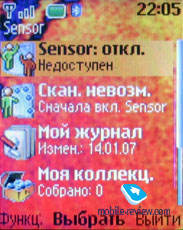
Internet
The devices handle TCP/IP protocol, which means that you may use Internet-GPRS to establish connection with Internet which is substantially handy for your wallet. Opera Mini did well on both models. EDGE support is also worth mentioning.
Bluetooth
Both devices boast Bluetooth 2.0 with EDR support onboard. The following profiles are available:
- Headset;
- Dial Up Networking;
- Object Push;
- File Transfer;
- Hands-Free v1.5;
- A2DP;
- SIM Access.
Handling Bluetooth connections was never an issue with either of the handsets. Connection to Nokia PC Suite version 6.8 via Bluetooth adaptor in pair with IVT Bluesoleil runs smoothly, just as data transfers do.
Wi-Fi
The Wi-Fi support in Nokia 6086 is the main and perhaps the only reason that we are now reviewing two models with different indexes with otherwise identical suite of features. However not everything is so perfect on this front in the 6086 - the Wi-Fi connectivity in this model is in fact pared down – specifically, it is “UMA only”. In other words, this handset has got Wi-Fi only for handling UMA (Unlicensed Mobile Access) technology. In its turn, this technology should be supported by your carrier in the first place (in Russia neither Megaphone nor Beeline or even MTS can boast such capability)
In practice UMA allows switching between default GSM-channel and WLAN network without breaking off a call. But its most important advantage is enabling operators to provide various services based on Wi-Fi or WiMAX, for example, from simple data transfer to streaming video- and audio services. However it will take a long while to launch this technology and get it settled down in Russia.
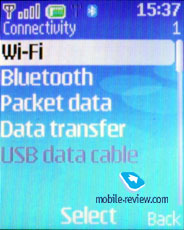 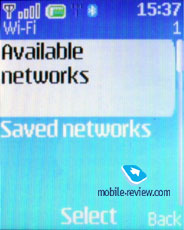
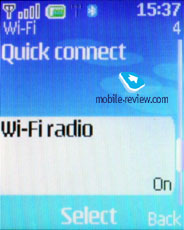 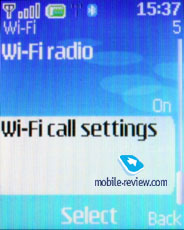
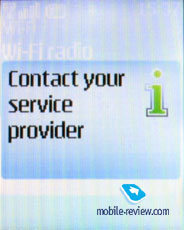
Music player
The updated player of XpressMusic range is built in both models. It also can be found in Nokia 5200 and Nokia 5300 which were the first models to pack this application. We will not waste time on listing out player’s specific features, as you may find them in the review of Nokia 5300.
Review of Nokia 5300. Music player.
The external loudspeaker or, rather, the volume level it outputs is quite remarkable. In spite of the fact there is a sole speaker on the casing, which is quite small on top of that, its volume and sound quality are on a very high level. The pleasant addition is also the fact that the speaker doesn’t get muffled, to put it simply, when in pocket or covered with your finger it doesn’t lose much of its volume level. Listening to the loud and penetrating sound of the external speaker, you quite naturally come to expect the same from the headset. But to our surprise the sound there was considerably weaker volume-wise, and we can’t say for sure why this is so, headphones and adapter will solve this problem.
FM-radio
The devices carry standard application, identical to other Nokia-branded offerings basing off Series 40, for handling radio. With its help you can save up to 20 radio stations and assign the name to each. Transferring radio onto the loudspeaker is supported, as well as auto and manual tuning and custom frequency input. Operation in the background mode is available, at that the display fills up with current frequency and station name.
Radio sensitivity is average –motionless or moving, we could not make it lose the signal, however it actually does fall flat, temporarily though, when good reception is impossible, for example in underground, but at the end of the day it is not crucial.

Camera
The handsets come bundled with 4x zoom-enabled VGA cameras. The following resolutions are available: 640x480, 320x240, and 160x120. The settings of image quality (basic, normal, high) are the same for both still images and video clips. For video you may set up 176x144 or 128x96 resolution as well as a the clip length, and then shoot at 15 FPS.
Basic color overlays are included: false colors, shades of gray, sepia, negative, over-exposure. Multi-shooting and self-timer are also at your disposal.
Camera app can be launched with the phone closed but in this case you can’t see the thing you are shooting.
Speaking about the quality of camera with a resolution this low is nonsense these days; it will be enough for you only to look at the snaps and video samples. Taking into consideration the folder-style design as well as the inability to show the caller’s photo on external display, the camera value here falls down dramatically.
 |
 |
(+)
maximize, 480x640, JPEG |
(+)
maximize, 480x640, JPEG |
 |
 |
(+)
maximize, 480x640, JPEG |
(+)
maximize, 480x640, JPEG |
 |
 |
(+)
maximize, 480x640, JPEG |
(+)
maximize, 480x640, JPEG |
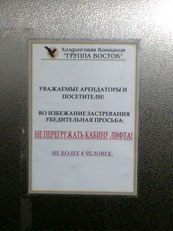 |
 |
(+)
maximize, 480x640, JPEG |
(+)
maximize, 480x640, JPEG |
 |
 |
(+)
maximize, 480x640, JPEG |
(+)
maximize, 480x640, JPEG |
 |
 |
(+)
maximize, 480x640, JPEG |
(+)
maximize, 480x640, JPEG |
Video sample (3GP, 572 Kb)>>>
Impressions
In terms of reception quality the handsets do fine. The volume level in the earpiece, which is above the average, as well as that in the loudspeaker, lets you hear the person on the other end without any problems, whether you are indoors or in a noisy street.
The volume of 64-chord polyphony is pretty high, at that MP3 tunes and radio signal played back through the loudspeaker don’t fall flat on this front either, which is something unexpected from a speaker this small.
The handsfree mode, thanks to the abovementioned loudspeaker, comes in handy in case you can barely hear what they say in the earpiece. You are also able to record your conversation via Sound Recorder application, where clip duration is limited only by the free memory available. If you bind up the Sound Recorder to one of the navigation pad directions, calling it up during a call will become a breeze, otherwise you will end up searching for it in the menu.
The update of mid-budget range can be called moderately successful for Nokia. Paying 230 USD (average price of the device today) in the form of Nokia 6085 you get a conventional-looking flip phone armed with one of the most cutting-edge platforms to date (S40 3rd FP1). Mediocre display and camera just-for-the-sake-of-it are sorts of sacrifices for a lower price. If in one or two months’ time the price breaches the level of 200 USD, we will have all the right to call it a success.
As for Nokia 6086, purchasing it would make no sense, unless soft-touch finishing and black color scheme act as magnets for you - it is impossible to use the restricted capabilities of that Wi-Fi connectivity in Russia. And for everything else there is Nokia 6085.
Artem Lutfullin (artem.lutfullin@mobile-review.com)
Translated by Vera Paderina (oleg.kononosov@mobile-review.com)
Published — 05 March 2007
Have something to add?! Write us... eldar@mobile-review.com
|

































































